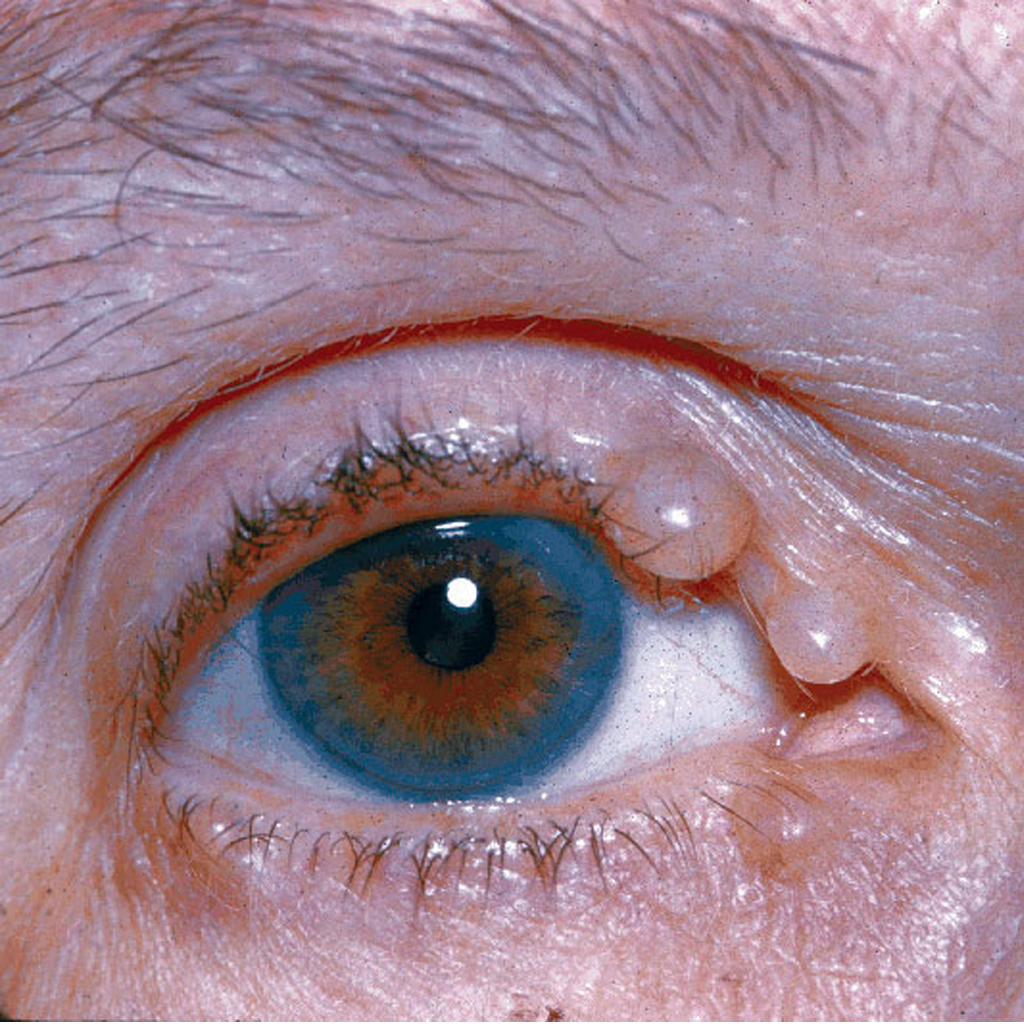
Exploring Lid Lumps: Cysts, Abscesses, Benign, and Premalignant Tumors
Abstract: Lid lumps encompass a spectrum of pathologies ranging from benign cysts and abscesses to potentially premalignant tumors. This article offers a comprehensive review of lid lumps, elucidating their etiology, clinical features, diagnostic approaches, management strategies, and recent innovations. By delving into the complexities of lid lump management, ophthalmologists can enhance their diagnostic accuracy and improve patient outcomes.
Introduction: Lid lumps are a common clinical presentation in ophthalmic practice, often posing diagnostic and management challenges due to their diverse etiologies. Understanding the underlying pathology and appropriate management strategies are crucial for optimizing patient care.
Etiology: Lid lumps can arise from various causes, including meibomian cysts, chalazia, hordeola (styes), sebaceous gland carcinoma, and other benign or premalignant tumors. Identifying the underlying etiology is essential for guiding appropriate diagnostic and therapeutic interventions.
Clinical Features: Clinical presentation of lid lumps varies depending on the underlying pathology but may include localized swelling, erythema, pain, discharge, and changes in eyelid contour. Differentiation between cystic lesions, inflammatory processes, and neoplastic growths is critical for accurate diagnosis and management.
Diagnostic Approaches: Diagnosis of lid lumps involves a combination of history-taking, clinical examination, and ancillary tests. Imaging modalities such as ultrasound, MRI, or optical coherence tomography (OCT) may provide valuable information about lesion characteristics and tissue involvement.
Management Strategies: Management of lid lumps depends on the underlying pathology and may include conservative measures such as warm compresses, lid hygiene, and topical antibiotics for inflammatory lesions. Surgical excision, incision and drainage, or cryotherapy may be indicated for persistent or symptomatic lesions, while premalignant tumors may require wide excision with histopathological evaluation.
Recent Innovations: Recent advancements in lid lump management focus on minimally invasive techniques and targeted therapies. Innovations such as intralesional steroid injections, laser-assisted excision, and molecular profiling for tumor characterization offer potential benefits in terms of reduced invasiveness and improved outcomes.
Conclusion: Lid lumps encompass a broad spectrum of pathologies, necessitating a thorough diagnostic approach and individualized management plan. By staying informed about the latest research and innovations in lid lump management, ophthalmologists can provide optimal care to patients, ensuring timely diagnosis and appropriate treatment.
For further reading and reference:
- American Academy of Ophthalmology – Eyelid Lesions: https://www.aao.org/eyenet/article/eyelid-lesions-pitfalls
- DermNet NZ – Eyelid Cysts and Tumors: https://dermnetnz.org/topics/eyelid-cysts-and-tumours
- National Cancer Institute – Sebaceous Gland Carcinoma: https://www.cancer.gov/types/skin/patient/sebaceous-gland-treatment-pdq


